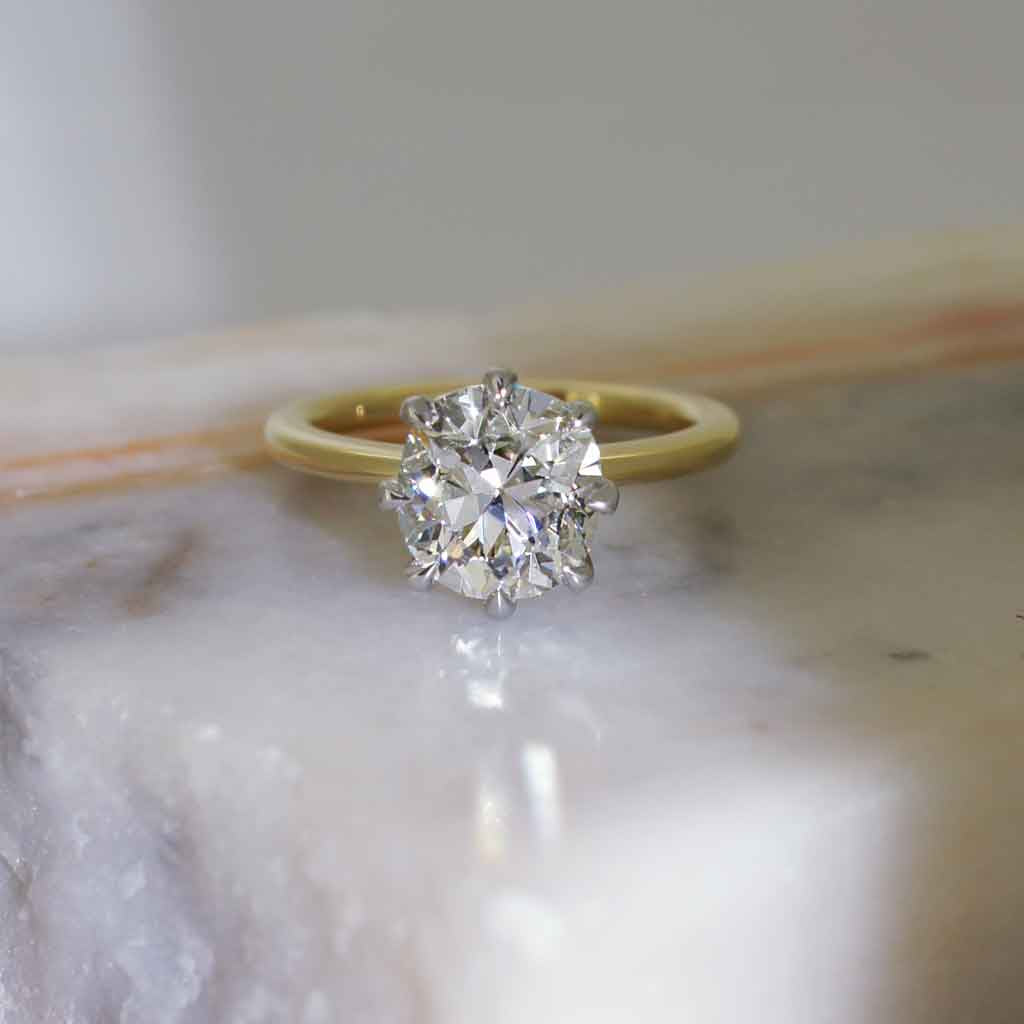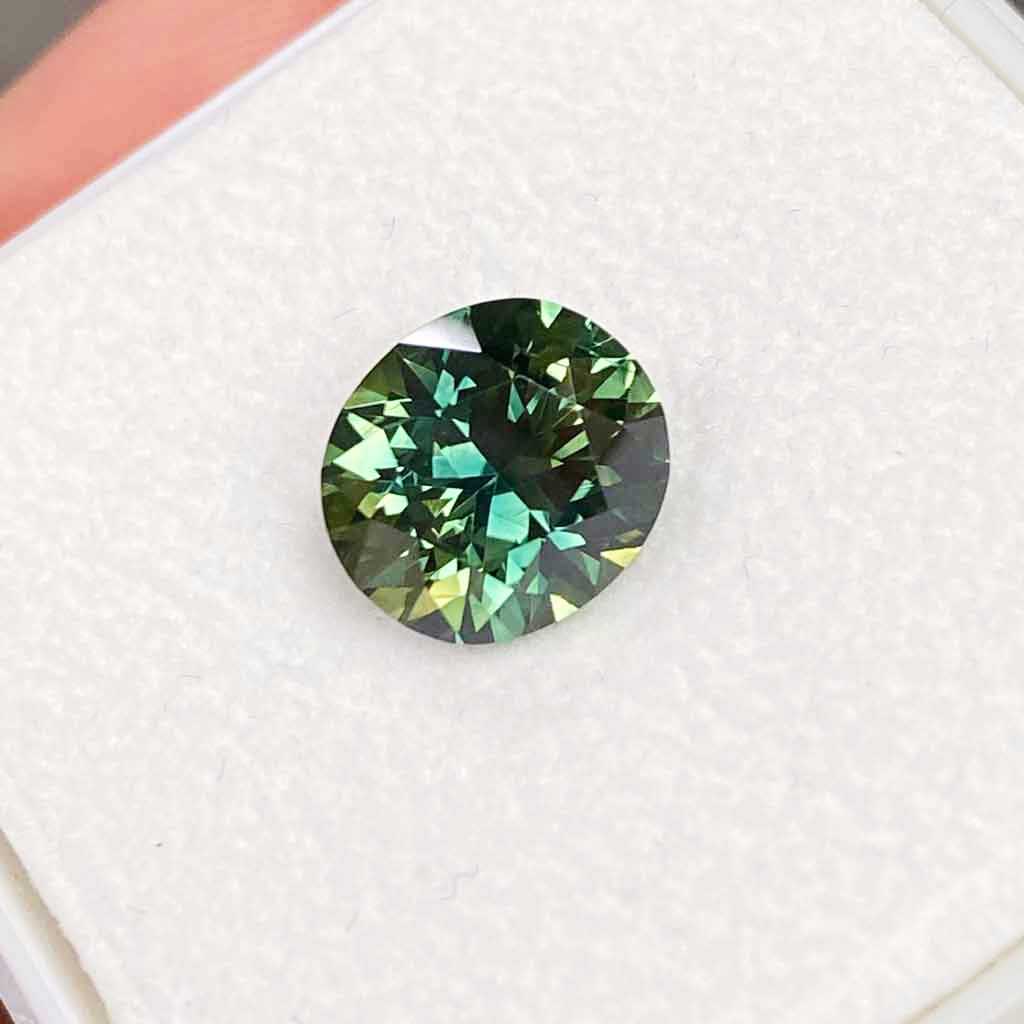
The enchantment of parti sapphires
A gem of choice for engagement rings, sapphire has been enjoying great popularity with couples here in Australia and worldwide due to its beauty, uniqueness and durability. Sapphire is part of the most important gem family, corundum, which also includes ruby. Both sapphire and ruby have consistently risen in value and popularity, due to their beauty, durability and versatility.
Sapphires naturally occur in a rainbow of colours: blue, teal, black, white (colourless), grey, orange, pink, green, purple and yellow, and parti (short from partition) or bi-colour.
Parti sapphire colours
Most parti sapphires are blue green, blue yellow or blue yellow green, however they also occur in combinations of purple, orange and pink. The same elements make up parti sapphire as other corundum (aluminium oxide Al203) but the trace elements present in the growing process give each stone its unique colours.
Bi-colour or parti sapphires occur in Australia as well as Africa (Madagascar, Tanzania and Nigeria).
Australian parti sapphires are from alkali-basalt related deposits and are very rich in iron content. Presence of iron and titanium gives sapphire its blue colour. The colour in Australian green sapphire is typically made up of a mixture of yellow and blue coloured banding within the crystal mixing to produce green. When some of these yellow and blue banded sapphire crystals are cut suitably, stones know as parti can be created. In some parti sapphires, colour zoning can be distinct and in others, more blended.
Parti sapphires are so special as each stone has a unique combination of zoning and banding. The colour zoning seen in parti sapphires relates to the growth layers of a crystal, and appears as a series of concentric hexagons parallel to the prismatic crystal faces.
Durability of parti sapphires
Corundum family, which parti sapphire is a member of, is the hardest, most durable gemstone type after diamond and measures 9 on the Mohs hardness scale, making it a popular choice for jewellery worn every day, such as engagement rings. Despite their durability, we should protect them like any other precious stone, and remove sapphire jewellery before engaging in heavy work, such as gardening or construction, or work that would expose your sapphire to harsh chemicals.
Parti sapphire value
The rarity of parti sapphires makes them valuable, especially bigger stones, and stones with brighter colours. Compared to Ceylon blue or Padparadscha sapphire though, parti sapphire is exceptionally good value and its price keeps increasing.
Sources of parti sapphire
While sapphires are most commonly sourced from Africa (Tanzania, Nigeria, Madagascar, Kenya, Malawi), Brazil, Myanmar (Burma), Pakistan (Kashmir), Sri Lanka, Thailand and United States (Montana), many of the unique parti and green sapphires hail from Australia (Queensland and New South Wales).
Australia produced a large quantity of sapphires in the 1970s. Today, Australian sapphire mining is much smaller in scale, and, most commonly, it is individual miners working on their claim. The cost and complications of sapphire mining have ensured good quality Australian sapphires are much more scarce.
Treatments
Heating sapphires is a common treatment that lightens or intensifies colour, improves uniformity and enhances clarity. Gentle heating in a kiln removes or dissolves any silky rutile inclusions in a sapphire back into the matrix of the stone. Heating does not damage the sapphire and is a lasting treatment that does not wear off with time.
Synthetics
Parti sapphire is the only stone that labs can’t synthesise, due to the patchy colour pattern.
Sapphire specifications
Hardness: 9 Mohs
Specific Gravity: 3.95-4.03 (sapphire)
Refractive Index: 1.760-1.774
Crystal Form: Trigonal. Sapphire crystals occur as barrel-shaped, double-pointed hexagonal pyramids and tabloid shapes. Corundum is found in igneous and metamorphic rocks and also in alluvial deposits.
Treatments: Heating
Special Care: None
Durability: Very good
Custom engagement rings with parti sapphires
We love working with this beautiful, truly unique gemstone, especially when it's selected for a bespoke engagement ring. We have a handpicked collection of beautiful parti and teal sapphires in all colours, sizes and shapes, and if needed can source a specific sapphire for your bespoke engagement ring. Appointments are available for you to view our sapphires in person or online, where we can talk you through all aspects of the design process.
Check out our ready to wear parti sapphire engagement rings, or book an appointment with us to view our selection of beautiful loose sapphires, and begin creating your bespoke engagement ring with one of these beauties.
Image: Lizunova Fine Jewels
Sources: The Jeweller’s Directory of Gemstones, Judith Crowe; OAGems.com












